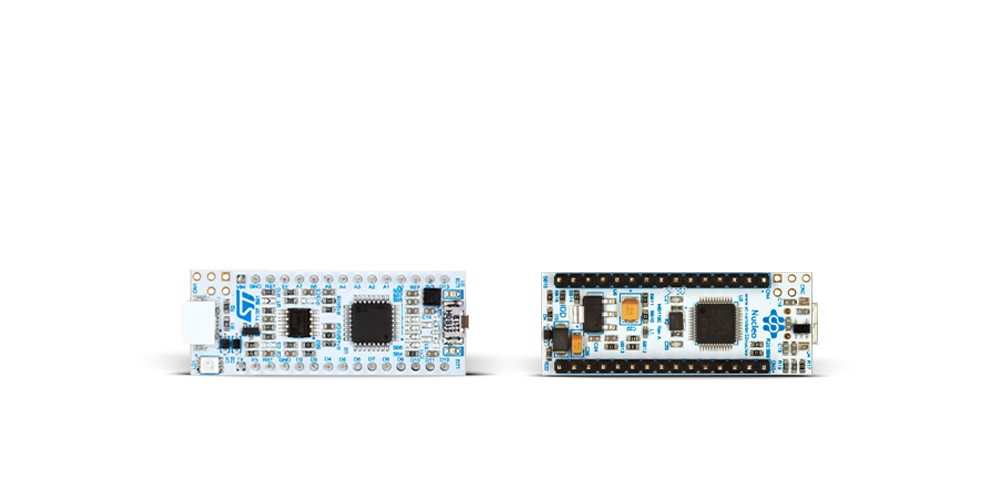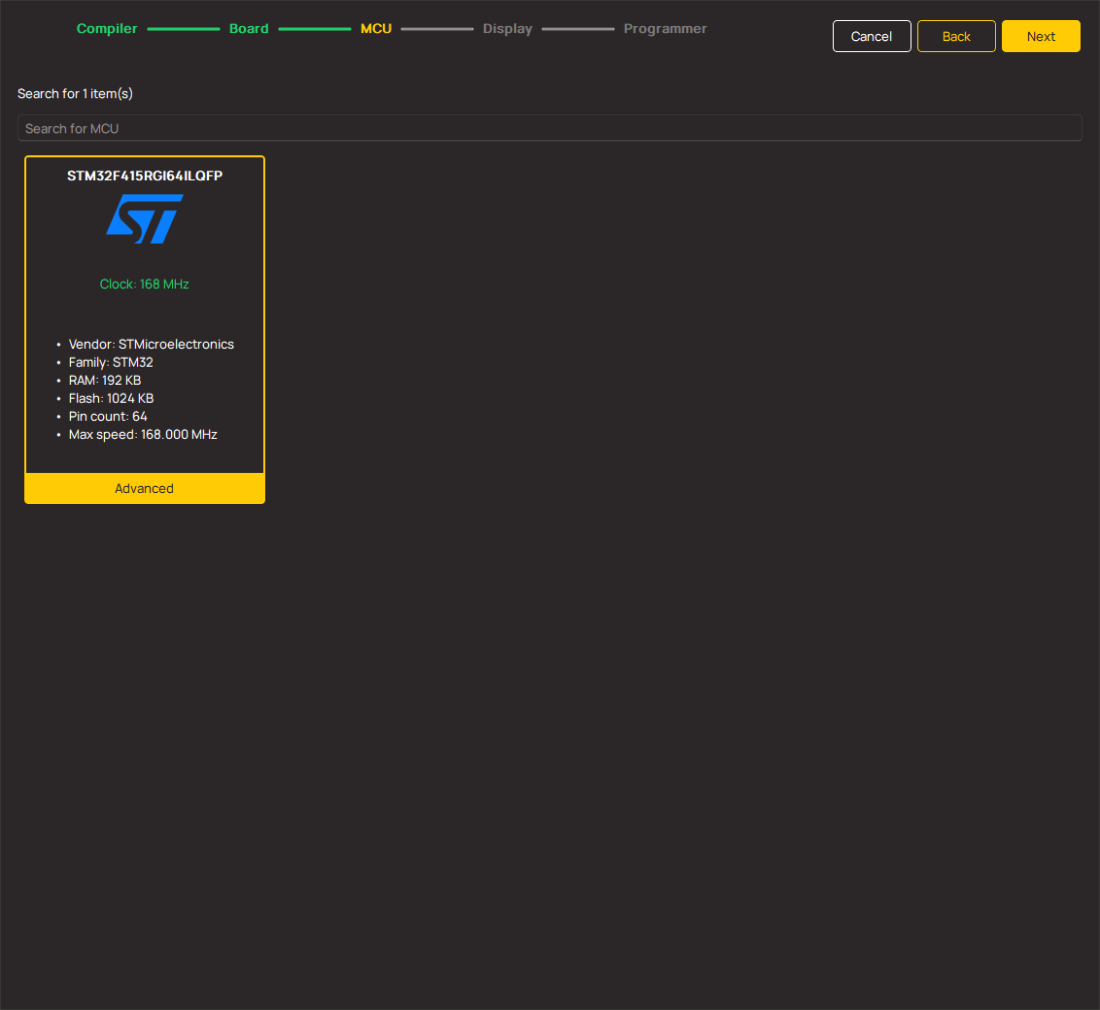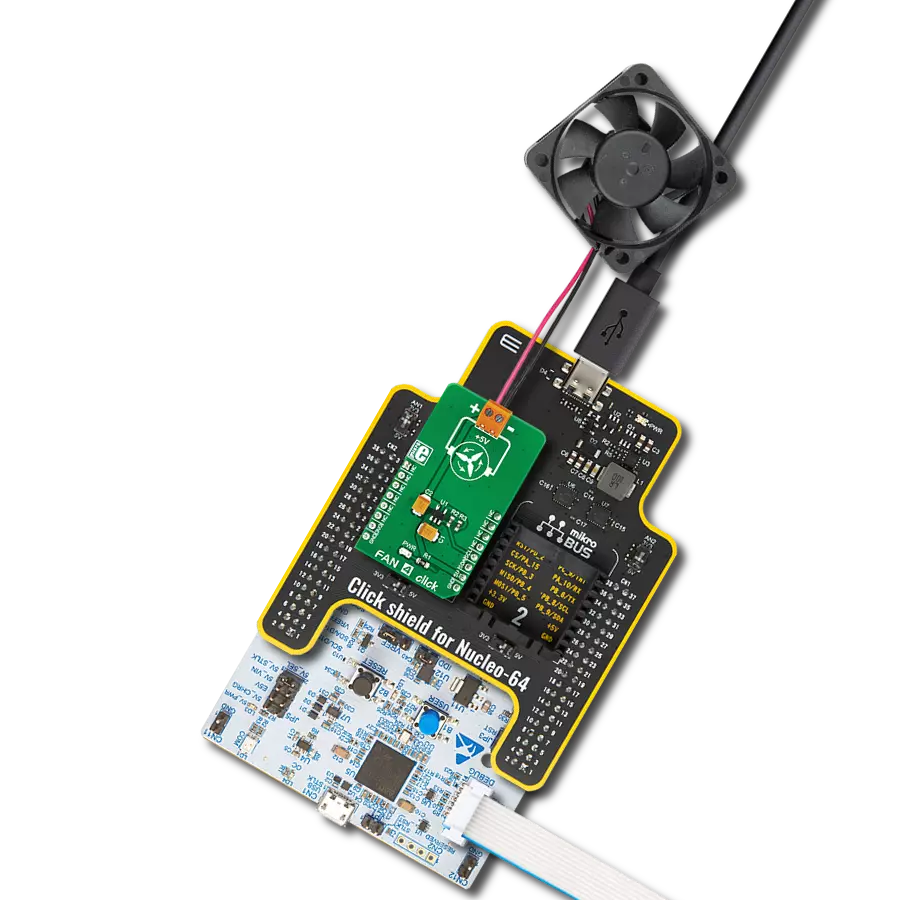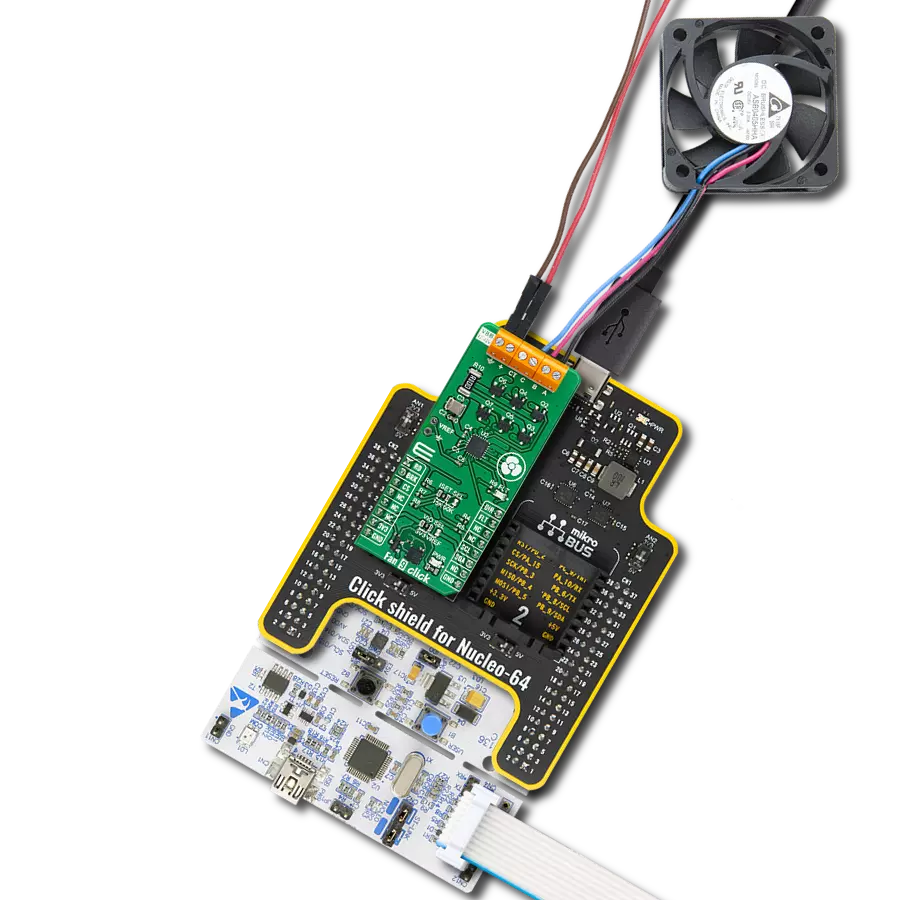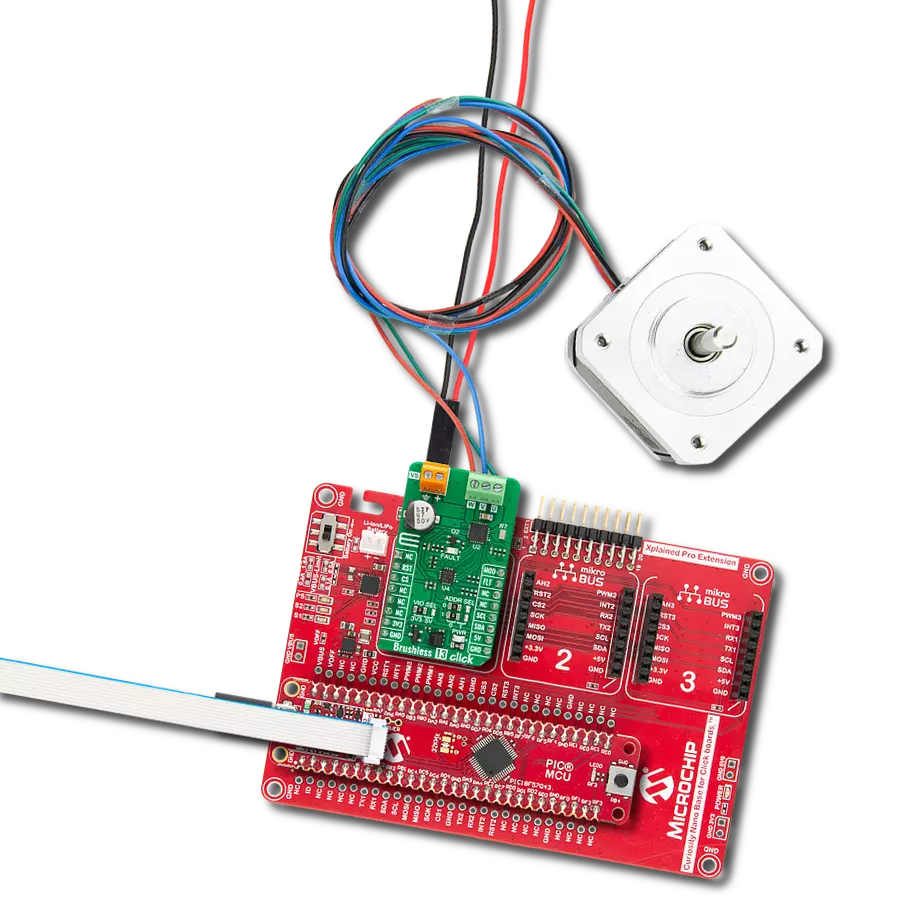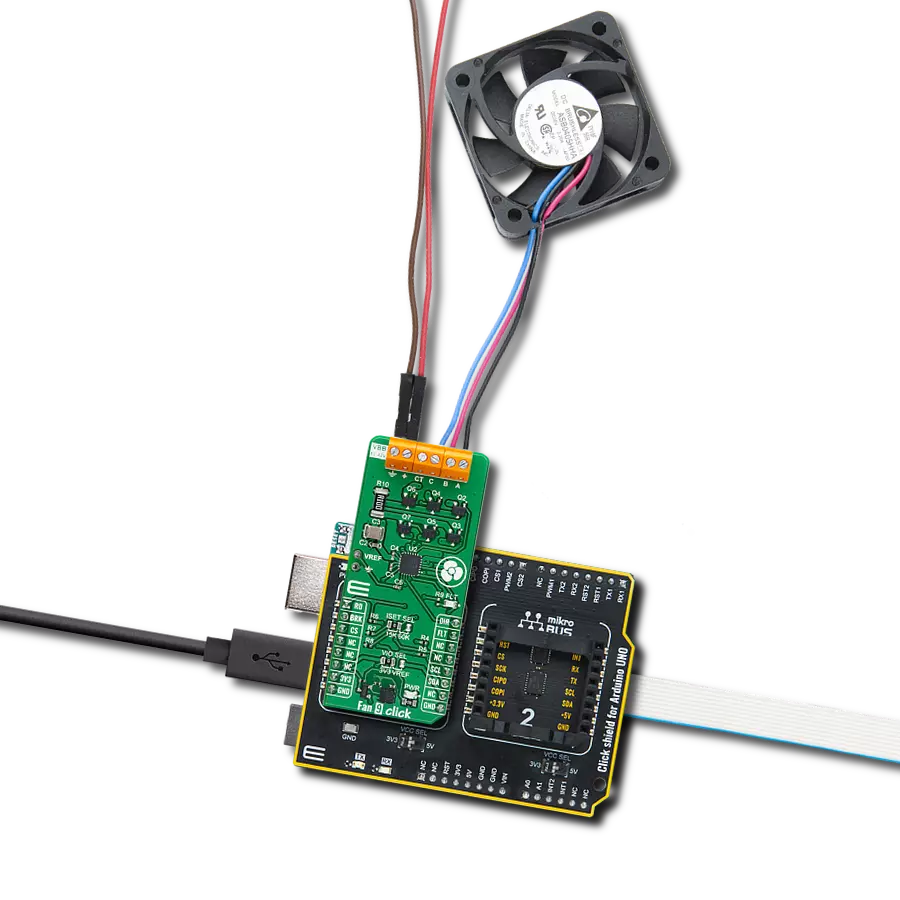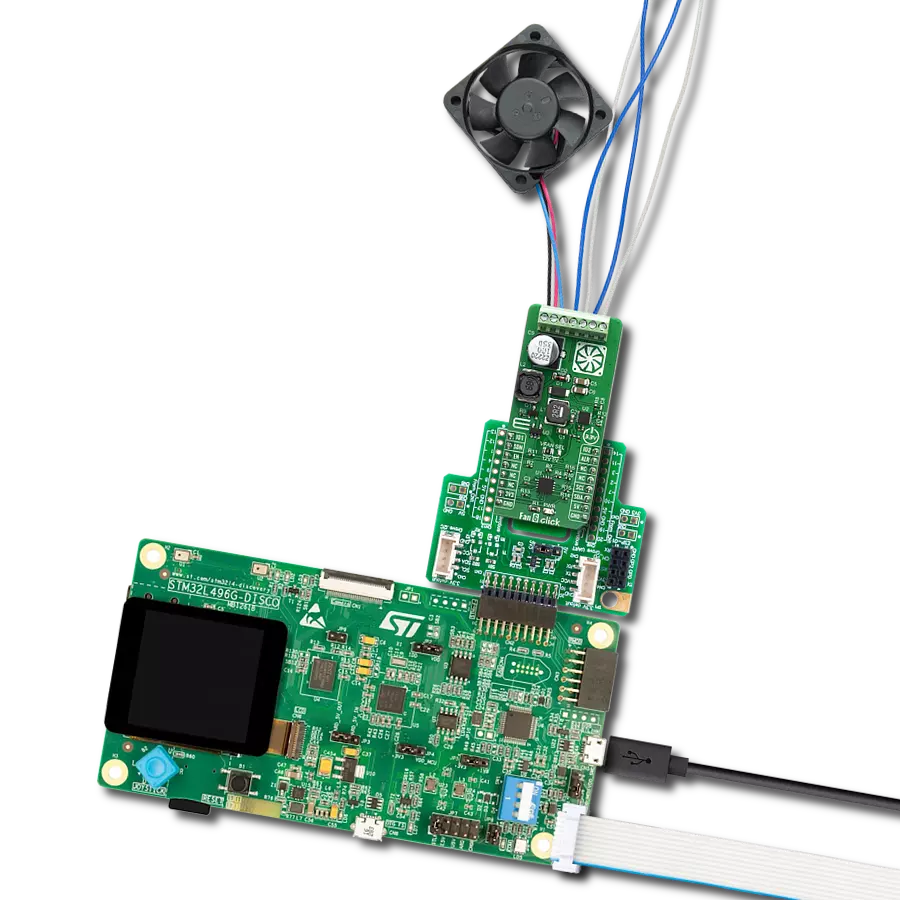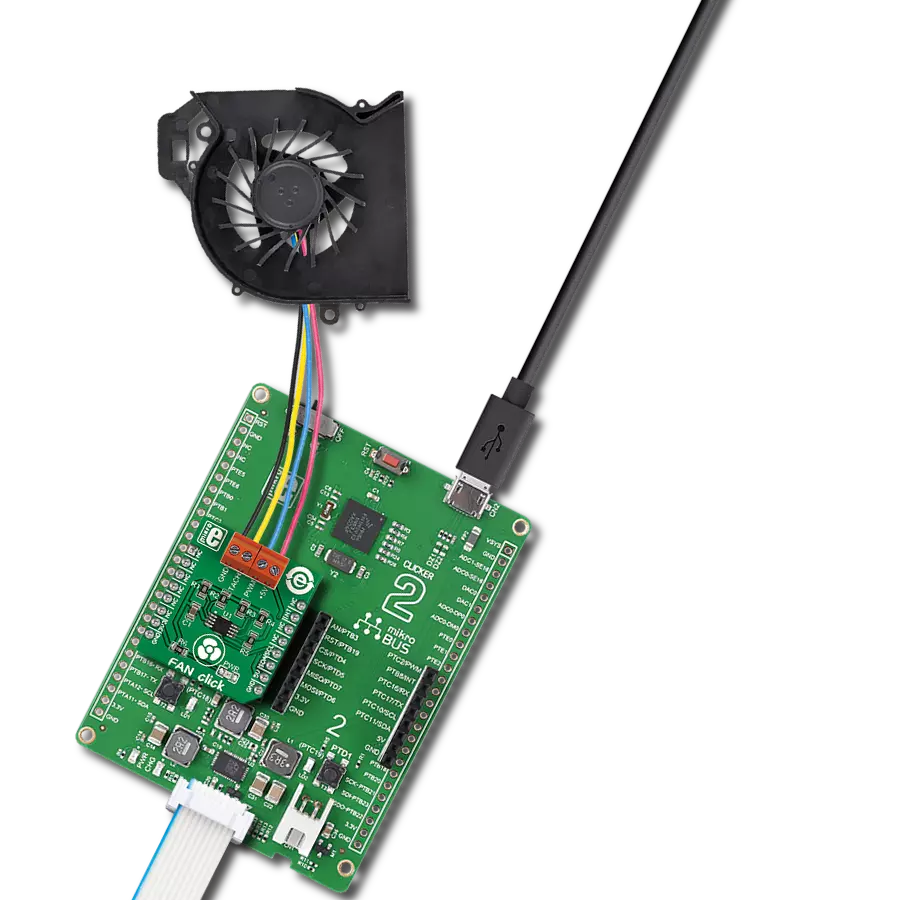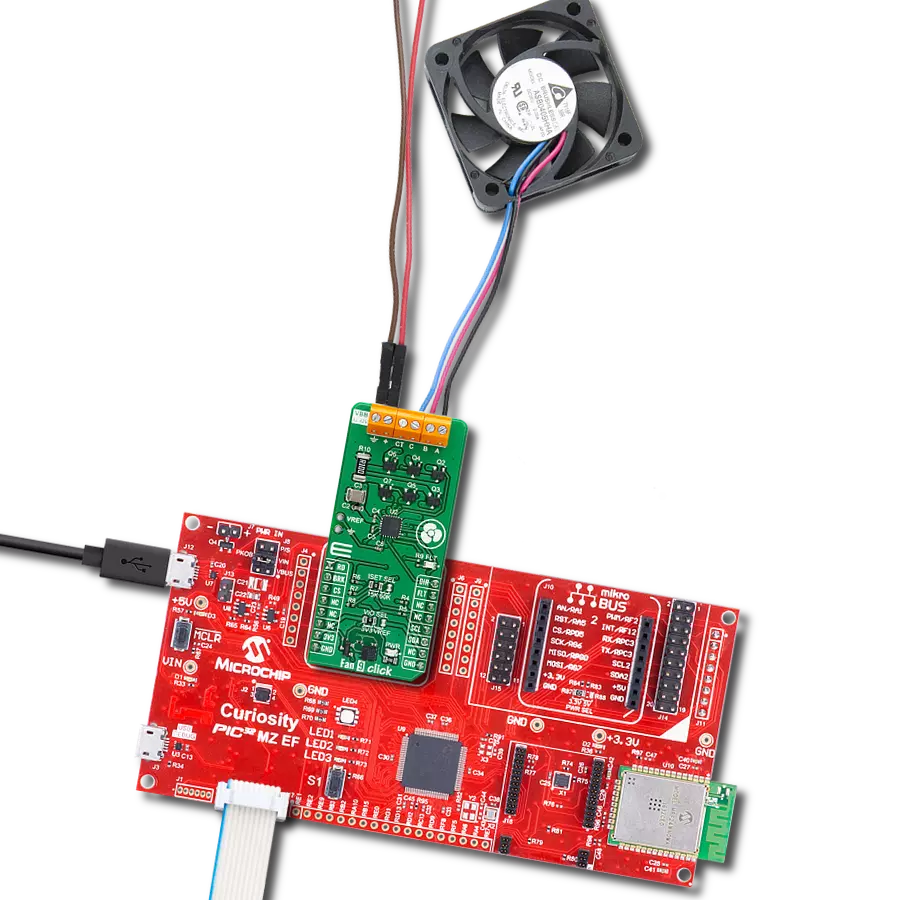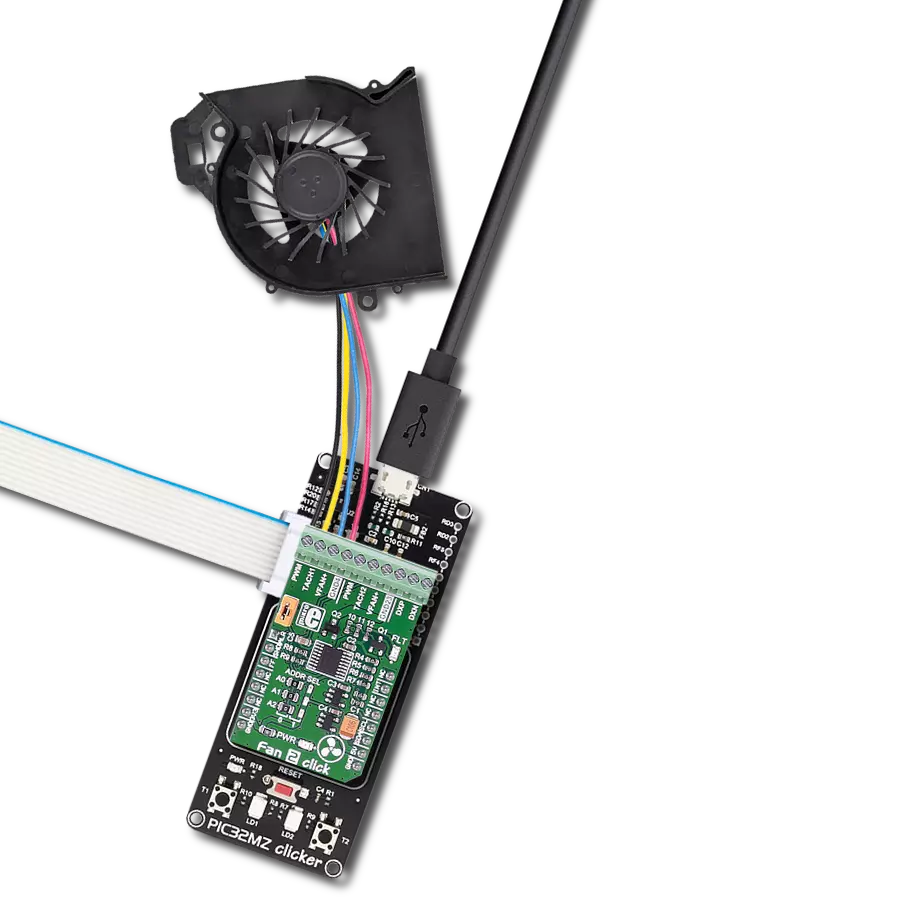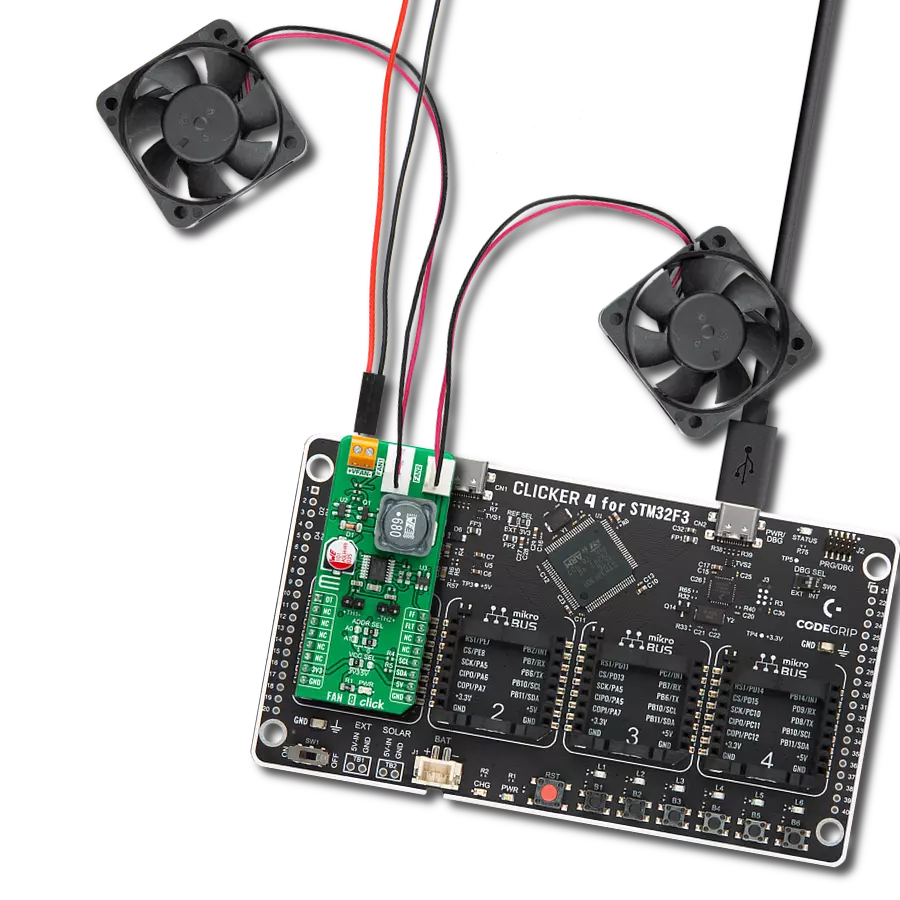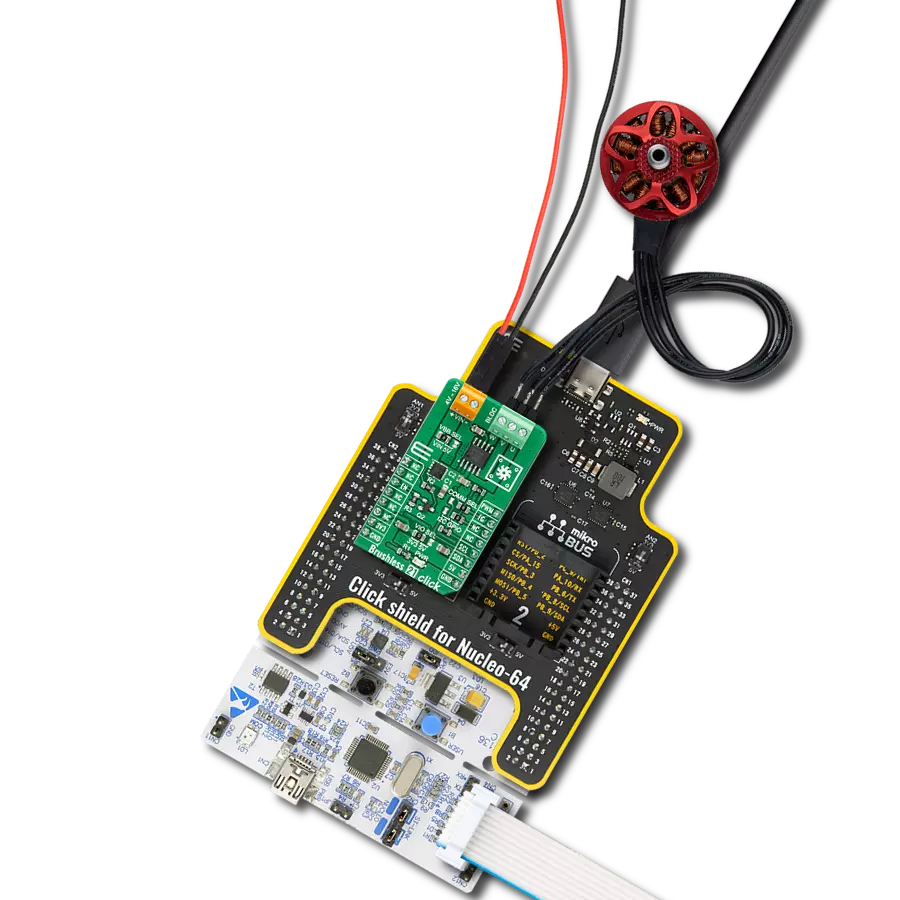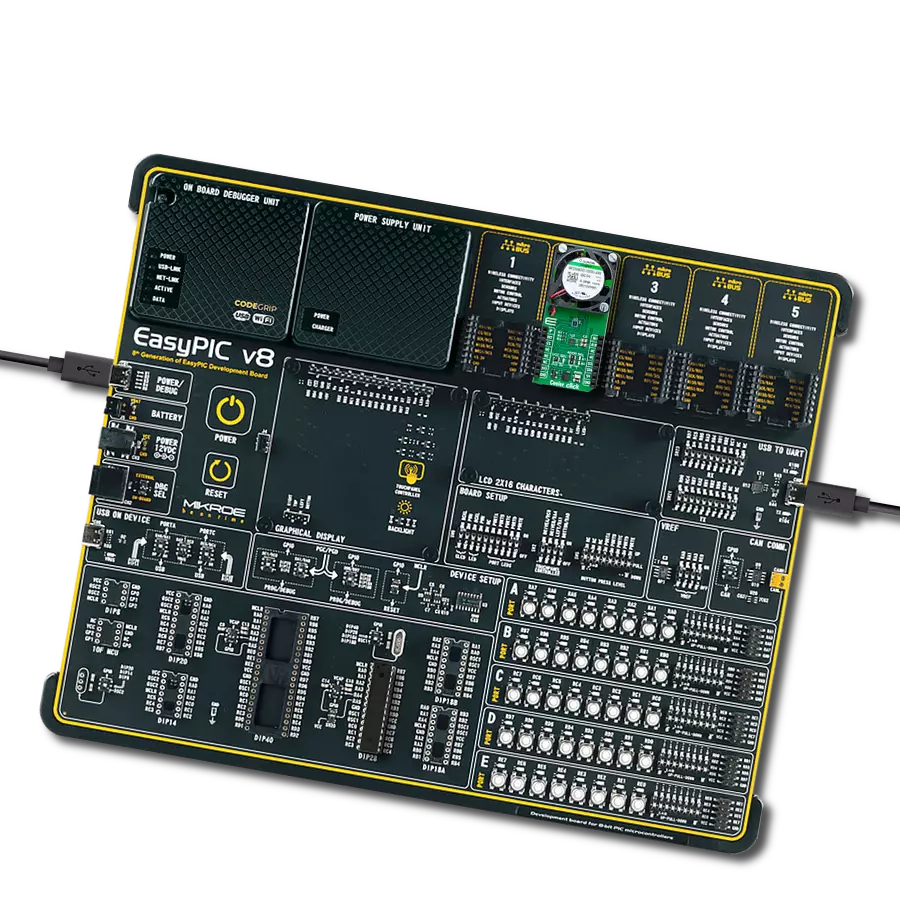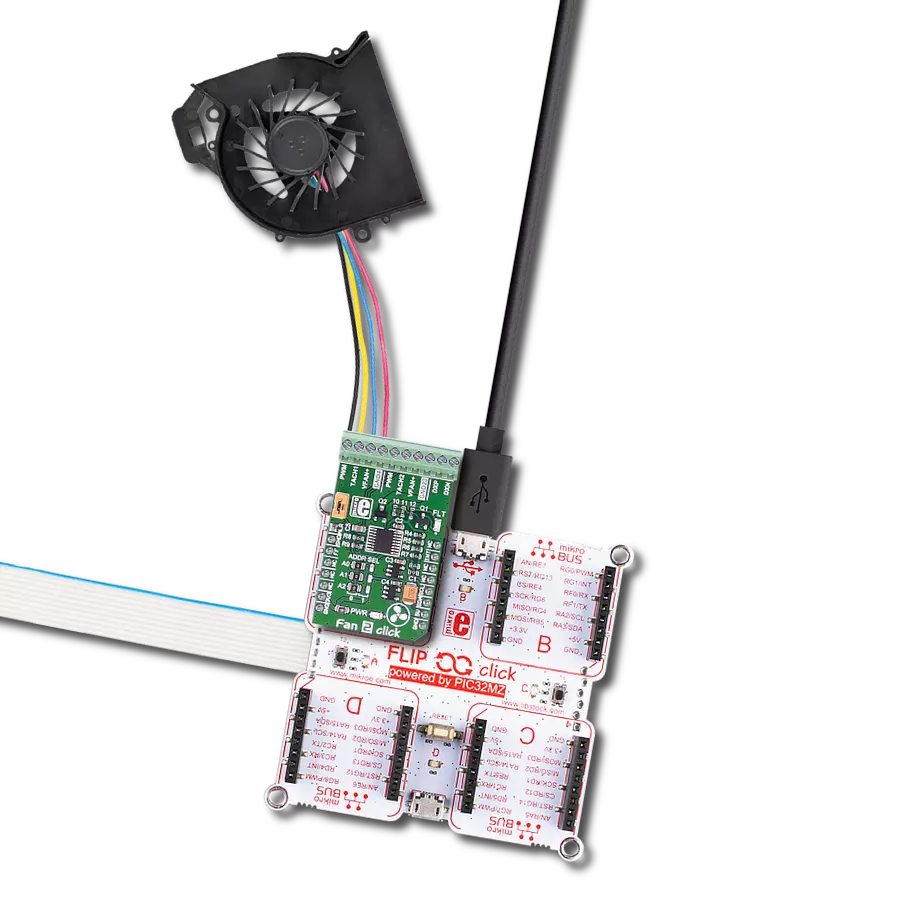Power up your home appliances and office equipment with reliable BLDC motor performance!
A
A
Hardware Overview
How does it work?
Brushless 31 Click is based on the TB6605FTG, a three-phase full sine-wave brushless motor controller from Toshiba Semiconductor, specifically made for home appliances, fans, and office equipment applications. This Click board™ uses the advanced capabilities of the TB6605FTG to control brushless motors through six onboard external N-channel MOSFETs (SSM6K513NU), ensuring smooth and efficient operation. The TB6605FTG features sine-wave PWM driving with 2-phase modulation, which enables high efficiency and low noise performance. Additionally, it includes a dead time function, brake, and start mechanisms to enhance motor control precision. The speed command is managed via a PWM input, and the auto lead-angle control function, which is disabled by default, can be manually activated to automatically adjust the lead angle based on motor speed, ensuring optimal performance once enabled. Furthermore, the board supports both clockwise and counterclockwise rotation (DIR pin) and is equipped with a motor lock protection function for added safety during operation. This Click board™ is designed to support a wide range of external power supplies, accepting input voltages from 9V to 28V through terminals on the board's front side marked VIN. It can deliver a
maximum output current of up to 5A, providing robust power for driving BLDC motors connected to the OUT terminals. The board also includes dedicated pins for additional Hall sensor connections via the J1 header to enhance the motor's performance and precision further. The VR1 trimmer, allows manual adjustment of the Lead Angle (auto Lead Angle function is disabled by default) to ensure e optimal motor performance. Various BLDC motors, particularly those with built-in Hall sensors, such as the BLDC Motor with Hall Sensor available from MIKROE, making it a versatile solution for high-precision motor control applications. In addition to the PWM pin for motor speed control and the DIR pin for controlling rotational direction, this Click board™ uses several control pins from the mikroBUS™ socket. The RST pin serves the START function, initiating motor operation when set to a LOW logic state and stopping it when set to HIGH. The BRK pin is dedicated to motor brake control, providing precise braking functionality. Additionally, the HP pin outputs the signal from the Hall pulse monitor, offering real-time feedback on the motor's position and speed. The onboard switches serve crucial functions for motor control. The OVP SEL switch allows you to toggle the output drive mode based
on the power supply voltage, either 12V or 24V. This is particularly important when the motor's rotation speed decreases rapidly due to a drop in PWM duty in the 180° energization mode (sine-wave drive). In such cases, the power supply voltage can rise as current flows back from the motor to the power source. The OVP SEL function is designed to suppress this voltage boost by switching the operation from 180° energization (synchronous rectification) to 120° energization when the supply voltage increases. The CLD SEL switch provides control over the motor lock protection feature of the TB6605FTG, which turns OFF the output power FETs when the motor is locked. This switch allows you to choose between Auto (AU) and Latch (LA) modes during a motor lock condition. In the Auto recovery mode, the operation recovers with three times the lock detecting time. This Click board™ can operate with either 3.3V or 5V logic voltage levels. This way, both 3.3V and 5V capable MCUs can use the communication lines properly. Also, this Click board™ comes equipped with a library containing easy-to-use functions and an example code that can be used as a reference for further development.
Features overview
Development board
Nucleo 32 with STM32F031K6 MCU board provides an affordable and flexible platform for experimenting with STM32 microcontrollers in 32-pin packages. Featuring Arduino™ Nano connectivity, it allows easy expansion with specialized shields, while being mbed-enabled for seamless integration with online resources. The
board includes an on-board ST-LINK/V2-1 debugger/programmer, supporting USB reenumeration with three interfaces: Virtual Com port, mass storage, and debug port. It offers a flexible power supply through either USB VBUS or an external source. Additionally, it includes three LEDs (LD1 for USB communication, LD2 for power,
and LD3 as a user LED) and a reset push button. The STM32 Nucleo-32 board is supported by various Integrated Development Environments (IDEs) such as IAR™, Keil®, and GCC-based IDEs like AC6 SW4STM32, making it a versatile tool for developers.
Microcontroller Overview
MCU Card / MCU
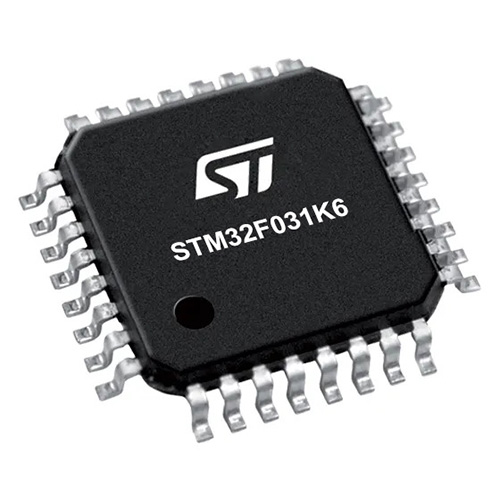
Architecture
ARM Cortex-M0
MCU Memory (KB)
32
Silicon Vendor
STMicroelectronics
Pin count
32
RAM (Bytes)
4096
You complete me!
Accessories
Click Shield for Nucleo-32 is the perfect way to expand your development board's functionalities with STM32 Nucleo-32 pinout. The Click Shield for Nucleo-32 provides two mikroBUS™ sockets to add any functionality from our ever-growing range of Click boards™. We are fully stocked with everything, from sensors and WiFi transceivers to motor control and audio amplifiers. The Click Shield for Nucleo-32 is compatible with the STM32 Nucleo-32 board, providing an affordable and flexible way for users to try out new ideas and quickly create prototypes with any STM32 microcontrollers, choosing from the various combinations of performance, power consumption, and features. The STM32 Nucleo-32 boards do not require any separate probe as they integrate the ST-LINK/V2-1 debugger/programmer and come with the STM32 comprehensive software HAL library and various packaged software examples. This development platform provides users with an effortless and common way to combine the STM32 Nucleo-32 footprint compatible board with their favorite Click boards™ in their upcoming projects.
Brushless DC (BLDC) Motor with a Hall sensor represents a high-performance motor from the 42BLF motor series. This motor, wired in a star configuration, boasts a Hall Effect angle of 120°, ensuring precise and reliable performance. With a compact motor length of 47mm and a lightweight design tipping the scales at just 0.29kg, this BLDC motor is engineered to meet your needs. Operating flawlessly at a voltage rating of 24VDC and a speed range of 4000 ± 10% RPM, this motor offers consistent and dependable power. It excels in a normal operational temperature range from -20 to +50°C, maintaining efficiency with a rated current of 1.9A. Also, this product seamlessly integrates with all Brushless Click boards™ and those that require BLDC motors with Hall sensors.
Used MCU Pins
mikroBUS™ mapper
Take a closer look
Click board™ Schematic

Step by step
Project assembly
Track your results in real time
Application Output
1. Application Output - In Debug mode, the 'Application Output' window enables real-time data monitoring, offering direct insight into execution results. Ensure proper data display by configuring the environment correctly using the provided tutorial.

2. UART Terminal - Use the UART Terminal to monitor data transmission via a USB to UART converter, allowing direct communication between the Click board™ and your development system. Configure the baud rate and other serial settings according to your project's requirements to ensure proper functionality. For step-by-step setup instructions, refer to the provided tutorial.

3. Plot Output - The Plot feature offers a powerful way to visualize real-time sensor data, enabling trend analysis, debugging, and comparison of multiple data points. To set it up correctly, follow the provided tutorial, which includes a step-by-step example of using the Plot feature to display Click board™ readings. To use the Plot feature in your code, use the function: plot(*insert_graph_name*, variable_name);. This is a general format, and it is up to the user to replace 'insert_graph_name' with the actual graph name and 'variable_name' with the parameter to be displayed.

Software Support
Library Description
This library contains API for Brushless 31 Click driver.
Key functions:
brushless31_set_duty_cycle- This function sets the PWM duty cycle in percentages ( Range[ 0..1 ] ).brushless31_pull_brake- This function pulls brake by setting the BRAKE pin to low logic state.brushless31_switch_direction- This function switches the direction of motor rotation by toggling the DIR pin logic state.
Open Source
Code example
The complete application code and a ready-to-use project are available through the NECTO Studio Package Manager for direct installation in the NECTO Studio. The application code can also be found on the MIKROE GitHub account.
/*!
* @file main.c
* @brief Brushless 31 Click example
*
* # Description
* This example demonstrates the use of the Brushless 31 Click board by driving the
* motor in both directions at different speeds.
*
* The demo application is composed of two sections :
*
* ## Application Init
* Initializes the driver and performs the Click default configuration.
*
* ## Application Task
* Controls the motor speed by changing the PWM duty cycle every 500 milliseconds.
* The duty cycle ranges from 80% to 0%. At the minimal speed, the motor switches direction.
* Each step will be logged on the USB UART where you can track the program flow.
*
* @note
* This Click board is designed for 5V systems but can also be controlled with 3V3 GPIO lines.
* Ensure your MCU is 5V tolerant on mikroBUS GPIO lines before turning on the power supply.
*
* @author Stefan Filipovic
*
*/
#include "board.h"
#include "log.h"
#include "brushless31.h"
static brushless31_t brushless31;
static log_t logger;
void application_init ( void )
{
log_cfg_t log_cfg; /**< Logger config object. */
brushless31_cfg_t brushless31_cfg; /**< Click config object. */
/**
* Logger initialization.
* Default baud rate: 115200
* Default log level: LOG_LEVEL_DEBUG
* @note If USB_UART_RX and USB_UART_TX
* are defined as HAL_PIN_NC, you will
* need to define them manually for log to work.
* See @b LOG_MAP_USB_UART macro definition for detailed explanation.
*/
LOG_MAP_USB_UART( log_cfg );
log_init( &logger, &log_cfg );
log_info( &logger, " Application Init " );
// Click initialization.
brushless31_cfg_setup( &brushless31_cfg );
BRUSHLESS31_MAP_MIKROBUS( brushless31_cfg, MIKROBUS_1 );
if ( PWM_ERROR == brushless31_init( &brushless31, &brushless31_cfg ) )
{
log_error( &logger, " Communication init." );
for ( ; ; );
}
if ( BRUSHLESS31_ERROR == brushless31_default_cfg ( &brushless31 ) )
{
log_error( &logger, " Default configuration." );
for ( ; ; );
}
log_info( &logger, " Application Task " );
}
void application_task ( void )
{
static int8_t duty_cnt = 8;
static int8_t duty_inc = -1;
float duty = duty_cnt / 10.0;
brushless31_set_duty_cycle ( &brushless31, duty );
log_printf( &logger, "> Duty: %d%%\r\n", ( uint16_t )( duty_cnt * 10 ) );
Delay_ms ( 500 );
duty_cnt += duty_inc;
if ( duty_cnt > 8 )
{
duty_cnt = 8;
duty_inc = -1;
log_printf( &logger, " Pull brake\r\n" );
brushless31_pull_brake ( &brushless31 );
Delay_ms ( 1000 );
log_printf( &logger, " Switch direction\r\n" );
brushless31_switch_direction ( &brushless31 );
Delay_ms ( 1000 );
log_printf( &logger, " Release brake\r\n" );
brushless31_release_brake ( &brushless31 );
Delay_ms ( 1000 );
}
else if ( duty_cnt < 0 )
{
duty_cnt = 1;
duty_inc = 1;
}
}
int main ( void )
{
/* Do not remove this line or clock might not be set correctly. */
#ifdef PREINIT_SUPPORTED
preinit();
#endif
application_init( );
for ( ; ; )
{
application_task( );
}
return 0;
}
// ------------------------------------------------------------------------ END
Additional Support
Resources
Category:Brushless


